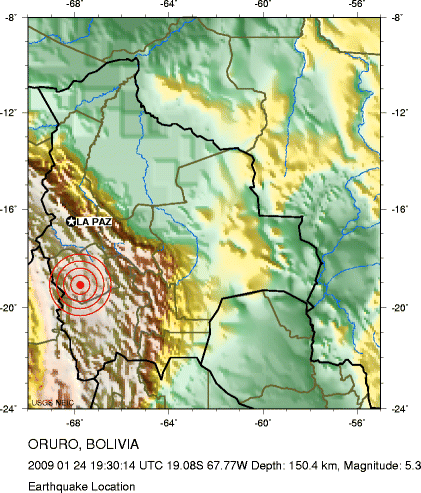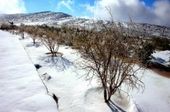
© USGS
Date-Time
* Saturday, January 24, 2009 at 19:30:14 UTC
* Saturday, January 24, 2009 at 03:30:14 PM at epicenter
Location 19.078°S, 67.769°W
Depth 150.4 km (93.5 miles)
Distances:
140 km (85 miles) SSW of Oruro, Bolivia
220 km (135 miles) WNW of Potosi, Bolivia
255 km (160 miles) SW of Cochabamba, Bolivia
290 km (180 miles) S of LA PAZ, Bolivia

